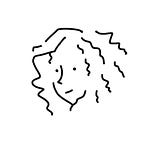How to Hunt a designer.
A small guide for startups and small-medium enterprises.
Finding an experienced designer in the IT field is a delicate task, especially when a small-medium enterprise (SME) has to compete with tech giants, which have much more resources. This article will give you an insight from a designer’s perspective aiding you in communication and recruiting.
Designers (especially experienced ones) are very picky and choosy especially when it comes down to accepting a new job offer or a long-term project. Regardless of how experienced you may be in the recruiting field, some common mistakes keep designers away from further interest in your offer. This article will assist you in avoiding such mistakes, thus increasing your chances to capture the attention of the professional you prefer the most.
Use Linkedin platform wisely.
LinkedIn is the most popular professional platform, thus the first message has the highest importance. You might only have one chance to grab a designer’s attention and it is crucial to keep the formatting style clean, straight to the point and professional.
The first message should include some basic information that will interest the professional, so keep in mind these three points while writing your first message.
- Who are you and which company do you represent?
- Why are you writing to them?
- What is the proposal?
Do not forget that you’re representing the company, not just chatting with a friend.
Be direct in your job descriptions
“Designer” is a very vague position and each specific type of designer is the guru of their specific field of expertise, to maximize your effectiveness is highly recommended to research to understand which specific type of designer do you/your company needs e.g. UI/UX designer, web designer, product designer, etc. It’s always better to specify job positions by their type and required level of experience which will help your company to save financial resources and also have higher success in hiring a suitable candidate.
Keep in mind that a good designer shouldn’t be also good in every aspect of design.
Even if you succeed in hiring a senior-level specialist who is interested in your company or the project, if you keep giving them junior-level tasks, one will be forced to resign sooner or later, thus you will be back to square one.
Small tip: If you only need one designer don’t hire someone with zero work experience. Even for the most talented designers, lack of mentorship in their early career will fall short to cover your business needs and negatively impact their career growth in the long run.
Research before everything
There are many design tools available, however, it doesn’t mean you should put all of them in your job description. Each design job or task requires a different toolkit, beware which ones you include as mandatory and which ones are optional.
An experienced designer knows their toolset and can guess your knowledge about their responsibilities based on the tools/skills you wrote in the job description.
Since everyday new and better tools are being released it is quite difficult to keep a track of current trends and techniques for non-designers, thus if you feel a lack of knowledge in writing your requirements it is always good to consult with an experienced designer you know to assist you. It’s always better to spend time researching rather than including unrelated tools in the job requirement and even potentially losing a professional due to them.
Watch Their Portfolio!
If you found a designer via their portfolio, LET THEM KNOW that you’re writing to them because you liked their work. As much as designers love to work with someone who knows what design is all about, they also love to know that you want to work with them because you saw their works and not just write to find anyone available.
If you found someone via Linkedin the chances that they have all their experience written on their profile is quite high as the chances of them having their portfolio attached so why are you still asking them to message you their years of experience? It’s like someone will apply for a job via your website and then ask you to message them what kind of company it is? Automatically bad first impression, right?
It’s not always bad to ask for their portfolio as most designers who work at the same company for a long time usually don’t update their portfolio frequently, but keep in mind to check it before asking for one.
You may work now in a company but remember that your name and account is yours. Don’t ghost the professional even if you already found one. Once you press the send button be sure to follow up no later than 2 days. Time is passing and the junior you once wrote became the senior you now hunt.
Every time you reject a candidate, remember that the chances of your paths getting crossed again are quite high, especially in the IT sector, so be sure you finish your conversation with a positive tone. Always write the feedback and the reason for being rejected, it will pay back in the long run.
Headhunting a designer is a delicate task, even though this article doesn’t guarantee you to find the unicorn you seek, it decreases the number of errors you could have made in the process and thus increases your chances to succeed!
So, Good Luck!
